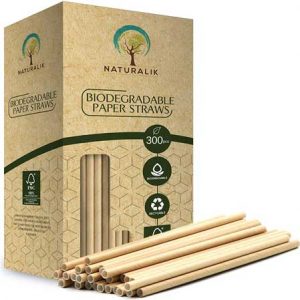“Hydroponics” is a mix of two words with Greek origins, “hydro” (water) and “ponics” (labor). In other words, hydroponics is a term that refers to a form of gardening that does not require the use of soil, and it has been around for millennials.
One fine example here is that of the famous hanging Gardens of Babylon or the Floating Gardens of China. Nonetheless, fast forward to our time, researchers only began to experiment with this peculiar form of soil-less gardening in the fifties. Ever since, a number of countries worldwide began to use hydroponics to produce their crops and their results were impressive.
Let us find out more about hydroponic gardening using the brief beginners guide to hydroponics and also learn the difference between hydroponics vs aquaponics.
What Is A Hydroponic Growing System?
Generally speaking, plants grow with the help of photosynthesis, using sunlight and the chlorophyll found in the leaves. Photosynthesis turns carbon dioxide into oxygen and glucose.
Since there is no need to use soil in the photosynthesis process, this is solid evidence for the fact that plants do not need it to grow. However, plants do need the nutrients and water they can obtain from from soil.
However, it is possible for plants to receive these nutrients from different other sources, such as solutions rich in nutrients that can be given to plants via their roots. This is, in short, the main principle used by hydroponics, or the process of growing plants in water or in a soil-less environment.
Advantages Of Setting Up Hydroponics At Home
There are lots of benefits that that derive from growing plants without actually using any soil for it.
Hydroponics Lets You Grow More Yields
It is possible to grow much larges quantities of yields compared to conventional gardening. Since plants that are grown using a hydroponics system need to dip their roots straight into a solution that contains lots of nutrients, this means they will receive exactly what they need without getting you involved every step of the process.
Plants part of a hydroponics system have smaller roots so they can divert additional energy to support the growth of leafs and stems. The smaller roots also allow you to grow a larger number of plants on the same surface, which means you will get to enjoy more yield from a limited surface. For example, you could use your balcony, an interior window ledge or a greenhouse to grow your own hydroponics plants at home.
Plus, the fact that a hydroponic system is more exposed to oxygen stimulates the roots to grow faster, while absorbing all the necessary nutrients at a faster speed. These nutrients are combined with water and sent straight into the roots, which means the plants are not forced to look for them in soil. The delivery of nutrients occurs a few times a day. Hydroponic plants need very small amounts of energy in order to locate the nutrients and break them down.
Hydroponic Plants Grow A Lot Quicker.
Another excellent benefit of using hydroponics is the fact that plants grow faster, usually 30% to 50% faster compared to regular plants grown in soil while subject to the same conditions. Since the majority of pests are found in the soil, using this type of soil-less agriculture allows you to enjoy a much more hygienic system of growing plants while dealing with fewer diseases. Hydroponics at home systems are excellent for growing plants indoors, all year long. With the help of computers and fully automated systems you can set timers with, you will get to enjoy an even more streamlined process.
Hydroponic Is Great For The Environment.
Hydroponic gardening relies on smaller amounts of water compared to regular, soil-based gardening, since the nutrient solutions can be used time and time again. Since there is no need to use any or large amounts of pesticides, hydroponic gardening is a lot healthier and safer for the environment. Plus, the fact that you do not need to use any topsoil automatically means that the matter of topsoil erosion is not something to concern yourself with.
The current state of today’s agriculture at a worldwide level and the crop growth trends we are all witnessing will keep eroding the topsoil and wasting water, which would make make hydroponics an ideal alternative. Checking out a few hydroponics systems 101 guide sounds like a good idea if you are trying to live a more sustainable lifestyle and you are interested in growing your crops with more ease and less hassle.
Hydroponic Systems 101
Hydroponic systems can be either passive or active. Active systems move the nutrient solutions with the help of pumps, whereas passive systems use the specific capillary action of wicks or growing mediums. Nutrient solutions are absorbed by either the wick or the medium and they are further transferred to the root systems. A passive hydroponic system normally gets extra wet and fails to send a sufficient amount of oxygen to the roots, which means the ideal growing rates are not achieved.
Hydroponic systems are also classified as recovery and non-recovery systems. A recovery hydroponic system is one that uses the same nutrient solutions time and time again. On the other hand, a non-recovery hydroponic system only uses the nutrient solutions a single time, and it is not able to recover it.
Hydroponic nutrient solutions incorporate all the necessary components that plants usually obtain from the soil. These solutions can be bought at specialized hydroponic supply stores offline and online. Th majority of these nutrient solutions are sold at high concentrations and you will only need to use between two and four teaspoons for each gallon of water.
Hydroponics VS Aeroponics VS Aquaponics
Aeroponics refers to a particular plant growing procedure that usually relies on a product called the AeroGarden. While the name itself would make you think the growing of plants is one in mid-air, in reality, the roots of the plants are suspended inside containers filled with air that is very humid. This helps the roots to grow in aerosols that are rich in nutrients, similarly to clouds that are filled with minerals.
Aquaponics refers to a mix of aquaculture and hydroponics. Aquaculture refers to the process of growing fish and a number of other water creatures. Aquaponics, therefore, mixes in these two processes in a symbiosis and allows plants to feed off the waste of fish and other aquatic creatures, while the plants can clean the water and return it to the fish.
Together with the fish and the waste from them, certain bacteria also plays a critical role when it comes to the way the plants get the nutrients they need. The respective microbes get inside the spaces between the roots and turn the waste from the fish as well as the rest of the solid substances into nutrient solutions that can be further used by the plants for growing.
Aquaponics is actually an excellent means of promoting the production of crops that are both organic and sustainable. Given the fact that the waste from the fish is recycled and used for growing plants and not thrown out into the world’s oceans makes it easy to see why aquaponics has gained a lot of popularity in recent years. Plus, the fact that the water is transferred in the same closed system repeatedly means the consumption can significantly drop.
A beginners guide to hydroponics will introduce you to the main types of systems that could help any newbie get started: ebb, wick, flow, and water culture, along with some more advanced systems such as nutrient film or aeroponic.


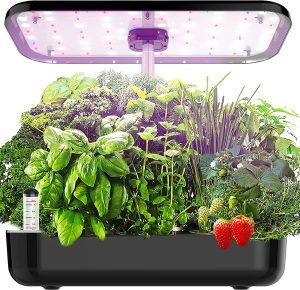
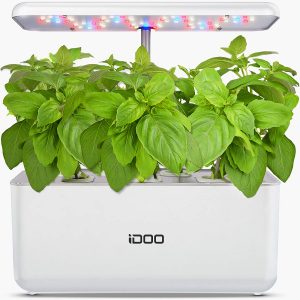
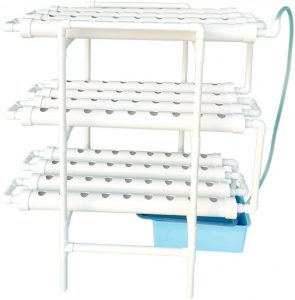
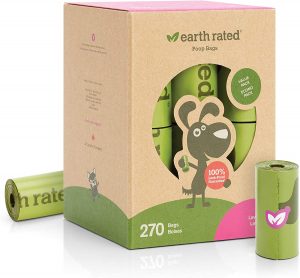
![Paper-Drinking-Straws-[200-Pack]-100%-Biodegradable---Assorted-Colors](https://www.eco-friendly.website/wp-content/uploads/2021/05/Paper-Drinking-Straws-200-Pack-100-Biodegradable-Assorted-Colors-300x267.jpg)
